Leopard Tortoise Diet
Leopard tortoises are native primarily to the grasslands regions in eastern and southern Africa. Being herbivores, the leopard tortoise diet consists of grasses, weeds, succulents and young leaves from bushes and shrubs. Researchers have identified over 50 different food sources in a single dropping of a wild specimen. They have been reported as being fond of carnivore dropping mainly of lion and hyenas. This is thought to be due to a desire for added minerals in their diet such as calcium. I have witnessed my own South African Leopard juveniles hunting and eating pill bugs with vigor. So I would add various insects to the Leopard tortoise diet list.
In captivity the goal should be to add as much variety as possible to simulate their natural diet. Their nutritional needs are not yet fully known or understood by researchers. Here is a great reference guide for the Leopard tortoise diet:
Link: Comprehensive Leopard tortoise diet guide
In my personal husbandry practice, I have had success feeding this varied diet to my leopard tortoise hatchlings and juveniles:
Fresh cut grass (St. Augustine, Bermuda, Winter Rye), hibiscus leaves and flowers, dandelions leaves and flowers, rose leaves and flowers, chick weed, succulents like aloe and spineless Opuntia cactus, romaine lettuce, spring mix, kale, carrots, mustard greens, collard greens, turnip greens, escarole/endive., Mazuri Tortoise Diet (for grazers) soaked in water. When hatchlings reach about 250 grams I then add some store bought Natural Orchard Grass by Kaytee cut up and soaked in water to soften it up. I will add this to their Mazuri Meetball or just offer it in their food plate.
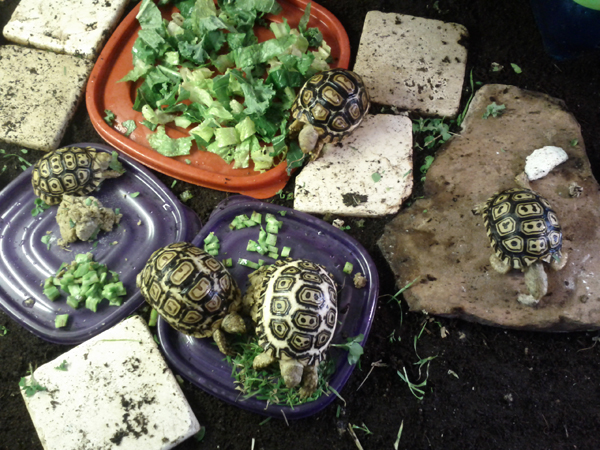
As mentioned earlier, the leopard tortoise diet needs a large variety of food items to supply them with the necessary vitamins, minerals and nutrients for proper growth and vitality. The importance of calcium not only the quantity but the type can not be overly stresses. Growing tortoises of all species need adequate amounts of calcium carbonate in their diet and the cuttlebone supplies that. The big question is “How much calcium is needed?”
This study give some insight to this topic: Influence of the calcium content of the diet offered to leopard tortoises
My current practice to get calcium carbonate into my leopard tortoise’s diet is to scrape a cuttlebone with a knife over their food three to four times per week. I also provide pieces of cuttlebone at all times spread out in their indoor enclosure. I have found that about half of my leopard tortoises will eat the cuttlebone pieces on a regular basis, the other half won’t eat them at all. This makes fully understanding how much calcium one leopard tortoise hatchling needs as it grows all the more difficult.
At this time, I favor making a Mazuri Meatball to further ensure calcium intake and high quality food consumption. This is in addition to offering a plate of greens, grasses, weeds, spring mix etc daily. I feed Mazuri daily and it accounts for about 50% dry weight of my tortoise hatchlings food intake. I know of tortoise keepers who feed Mazuri exclusively and others who refuse to feed Mazuri at all. So, I guess that I split the difference. The key is to always offer non Mazuri flavored foods as well so your tortoise does not become ‘addicted’ to Mazuri and refuse to eat anything else. I have heard that this sometimes happens but I have never experienced this myself with any of my leopards.
Here is my Mazuri Meatball recipe:
1) Soak Mazuri Tortoise Diet in warm water for about 10 – 15 minutes until it takes on a soft spongy feel.
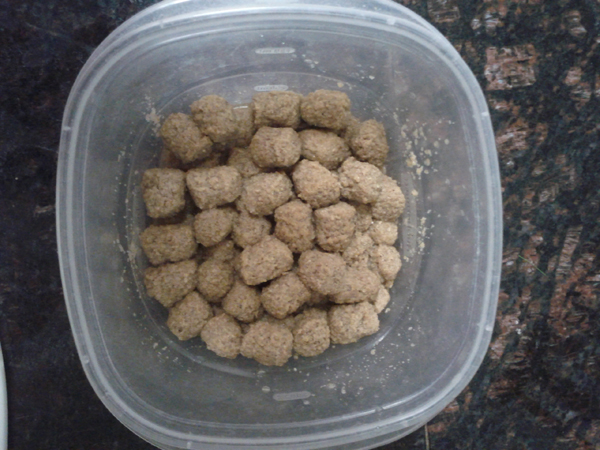
Soaked Mazuri in warm water
2) Add calcium powder from a cuttlebone or another source like Rep-Cal Calcium.
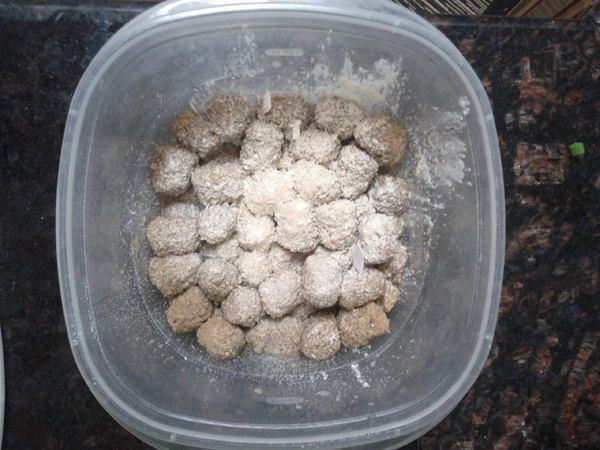
Soaked Mazuri with cuttlebone powder added
3) Add fresh cut leaves (rose, hibiscus etc.) and make sure they are finely cut with scissors.

Mazuri with cut leaves
4) Add fresh cut grasses. Again finely cut with scissors.
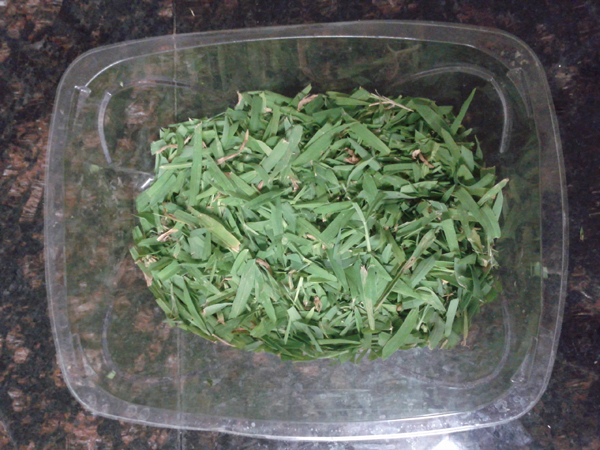
Fresh cut /chopped grasses
5) Mix all the added ingredients with your hand until it is all evenly distributed. The texture should be thick enough that it holds its shape a bit.
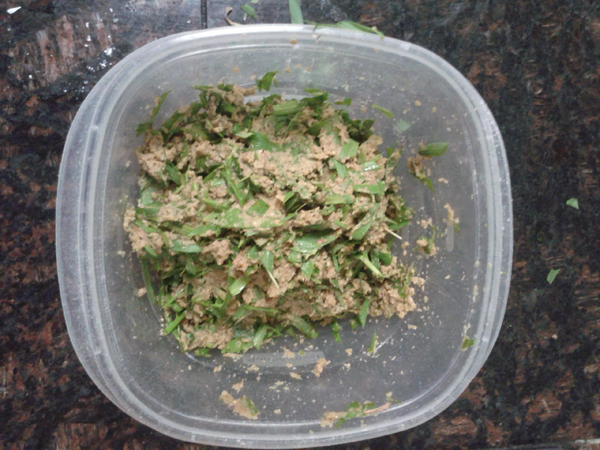
All the mixed ingredients to make a Mazuri Meatball
The only thing left to do now is plate it and watch your tortoise chow down.
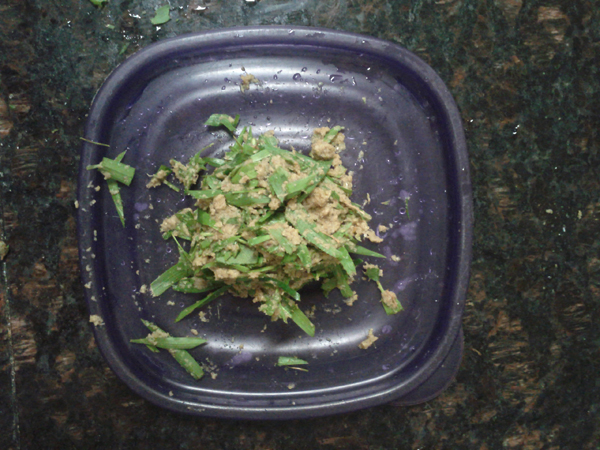
I have been very happy with the results following this feeding regimen. My tortoises are showing signs of steady, healthy growth and a very solid shell both the plastron and carapace. I have yet to loose a hatchling yet from ‘Hatchling Failure Syndrome‘ feeding this way.
